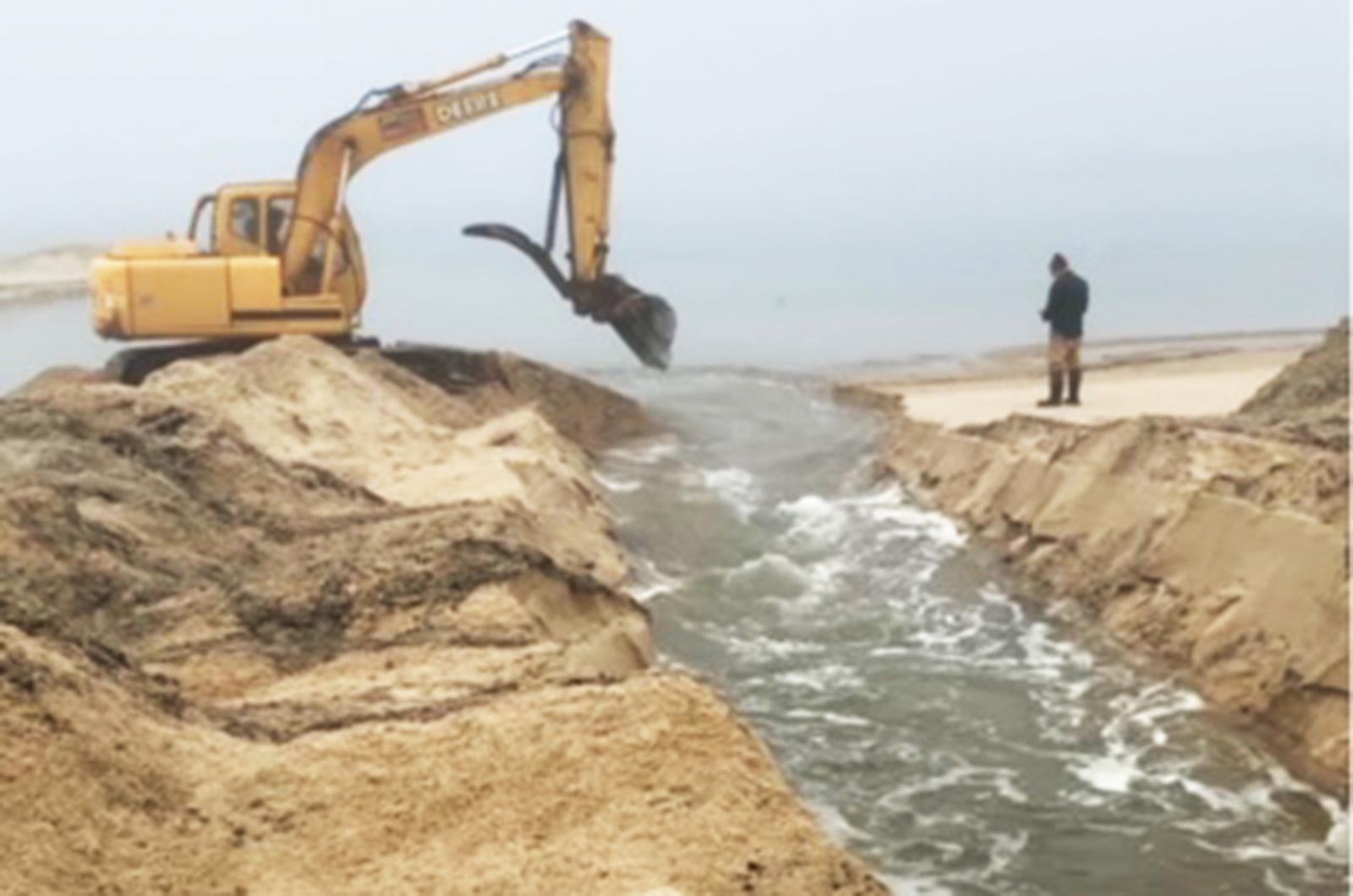It was a poignant moment when Davis Solon shared that he wished he had had more time with Kent Healy — West Tisbury engineer, historian and sage — to learn about the ins and outs of creating a cut and opening Tisbury Great Pond.
Davis serves as one of the Tisbury Great Pond “sewers,” whose job it is to determine when to open the pond. The term sewers may have originated in 1708, when Queen Anne of England appointed a Royal Commission of Sewers who “had the authority for the repair and maintenance of walls, ditches, banks, bridges, gutters, sewers, gates, causes, bridges and streams and any other defenses by the coast of the sea and marine ground lying and being with a specific district liable to inundation by the sea or rivers.”
Kent Healy, who managed the pond opening as long as most of us can remember, died in 2021 and his legacy remains through his lifelong work, mentorship and care for the Island’s people and places.
I, too, sorely miss Kent and his periodic calls. He would ring me up to share his plan to cut the pond, and request that I send one of my bird people to keep an eye on the avian species on the beach while his team participated in a centuries-old tradition of opening the pond.
Last week I had a bird’s eye view of this operation, as it was my turn to be the eyes and ears for the birds. Davis, Jay Sonia and his excavator, and Johnny Hoy (West Tisbury’s herring warden, among other things) were there to conduct this historic and important event.
This calculated cut is made for a variety of reasons – to allow the inflow and outflow of herring and other fish and marine species, to maintain salinity for shellfish, to encourage tidal flow and pond flushing, to regulate the water level for upland areas and to manage flooding when the freshwater inputs of rain and groundwater cause the pond’s water level to rise.
Three to four openings are managed per year, and follow a long-standing practice. It was the Wampanoag people who first opened the Island’s south shore ponds. Natural openings were also likely to occur periodically, with storms, winds and overwash contributing to breaches.
An early documented record of opening Tisbury Great Pond occurred in 1694. At that time, an extant bill to the riparian owners — abutters of the waterway — provided monies to pay for the cost of animals and labor to open the pond. Costs were much lower then: in 1715, Mrs. Johnson D. Whiting rented horses and a driver to open Tisbury Great Pond at a cost of $1.85.
Johnny and Davis were happy with the successful opening. After checking in on the cut the next day, Johnny reported that “the opening looks good . . . and we have five days of big tides coming up. I didn’t see or smell a lot of life but hopefully that will change in the next few days. I did get my first striper of the year just as you were leaving.”
Ah, to be that salty. Inquiring minds, and those of us who aspire to be able to ”smell of a lot of life,” want to know what is that scent. Johnny poetically followed up, describing it as a “super fresh, fishy tang.”
While spring appears on the land for most of us with the flowers, buds and early blooms, those like Johnny, who might just have salt water running through his veins, know that spring arrives with the opening of the ponds — the smells of a good pond breach, and the flow of fish and wildlife through a newly-dug channel.
Kent would have agreed.
Suzan Bellincampi is Islands director for Felix Neck Wildlife Sanctuary in Edgartown and the Nantucket Wildlife Sanctuaries. She is also the author of Martha’s Vineyard: A Field Guide to Island Nature and The Nature of Martha’s Vineyard.




Comments
Comment policy »